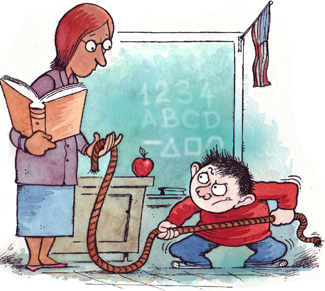
In Part One of The Power Struggle, I focused on tips to empower educators in building their self-awareness during or before a potential power struggle. In Part Two, I will briefly review the functions of behaviors and how students use them to satisfy their personal needs. We often fall into behavior traps because we are unaware of what our students are trying to communicate. Educators must learn how to identify which of the four elements of behavior apply to how a child is behaving. Undesirable behavior is a signal which alarms us that something is wrong.
Elements of Behavior
Escape: Desires to avoid homework, activity, individuals, or whatever in their setting is uncomfortable for them.
Attention: Desires attention from other people, whether it is positive or negative.
Sensory: Wishes to get away from a particular experience, whether it is auditory, tactile, visual, movement or pressure.
Tactile: Want for a particular object.
Identifying the reason for the behavior is crucial in planning an intervention. Analyzing the behaviors in the context in which they occur will help you find an appropriate solution to the problem. Also, it will prevent you from engaging in a power struggle because you have already gained an understanding of the student’s needs and can then deal with effectively. In Part Three of The Power Struggle, I will provide you with intervention strategies and replacement behaviors.


Very True. Understanding the four elements of behavior can guide students and educators on the right path towards healthier behaviors. Thus, stronger relationship. Also, The Power Struggle can be an asset for parents as well. Thanks for sharing Tiana.
Exactly! We are glad you enjoyed it.